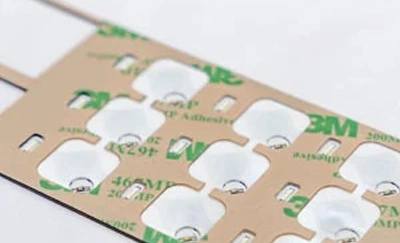
The typical structure of a membrane switch is a multi-layer structure consisting of an insulating material and a conductive material with a certain elasticity. It is a flat, self-locking push-button switch. The manufacturing process of the membrane switch is mostly done using screen printing. According to the pre-designed contact and circuit, conductive ink is printed on a flexible polyester (PET) film, and then the printed circuit film is combined with a printed flexible substrate, PCB board or other panel materials. Compared with traditional mechanical switches, membrane switches have the advantages of simple structure, beautiful appearance, excellent environmental resistance, and long service life. At the same time, due to the unique structure of membrane switches, they are more conducive to the development of electronic devices towards lightweight, thin, short, small, and highly intelligent directions.
Membrane switches are not just a new type of panel or a single switch component, but a new type of electronic device based on the working principle of membrane pressure sensors. They can be integrated into the entire panel of a machine or used as functional labels. They can also serve as an appearance decoration or simply as switch buttons. Based on the core of membrane pressure sensors and the possibility to use various substrate materials, membrane switches can achieve many different functions. Nowadays, they can be seen in household appliances, 3C electronics, automotive controls, and other fields. Therefore, custom membrane switches are appropriately called the assembly of electronic device products that integrate functionality and decoration.
As a novel electronic device, although the application and popularization of membrane switches in the international market began in the 1980s, with the progress of technology and the development and application of new materials, their application range has spread to various fields such as industry, agriculture, defense, scientific research, medical, office automation, household appliances, and children's toys. Especially after entering the 21st century, the booming 3C consumer electronics market has driven the continuous development of membrane switches towards miniaturization, intelligence, and multifunctionality.
Membrane switches are actually a set of tactile switches that are responsible for transmitting operating instructions to the rear circuitry of the machine. Under normal conditions, the contact between the upper and lower layers of the switch is separated due to the gap determined by the thickness of the windowed isolation layer in the membrane switch (even in a single-layer circuit structure, the circuit contact plates are separated in a maze-like manner). When an external force reaching a corresponding point is applied to a specific button on the panel, the two contacts corresponding to the button instantaneously close. At the same time, the signal is transmitted to the rear circuit through the connected plug, causing the machine to work according to the preset instructions. When the external force is removed, due to the elasticity of the membrane switch base material, the contacts quickly separate and reset. At this time, the input of a signal has been established, and the working state of the machine is not affected by the separation of the contacts.
The custom keypad manufacturer often design these membrane switches to meet specific operational requirements and user interfaces, ensuring both functionality and durability in various applications.